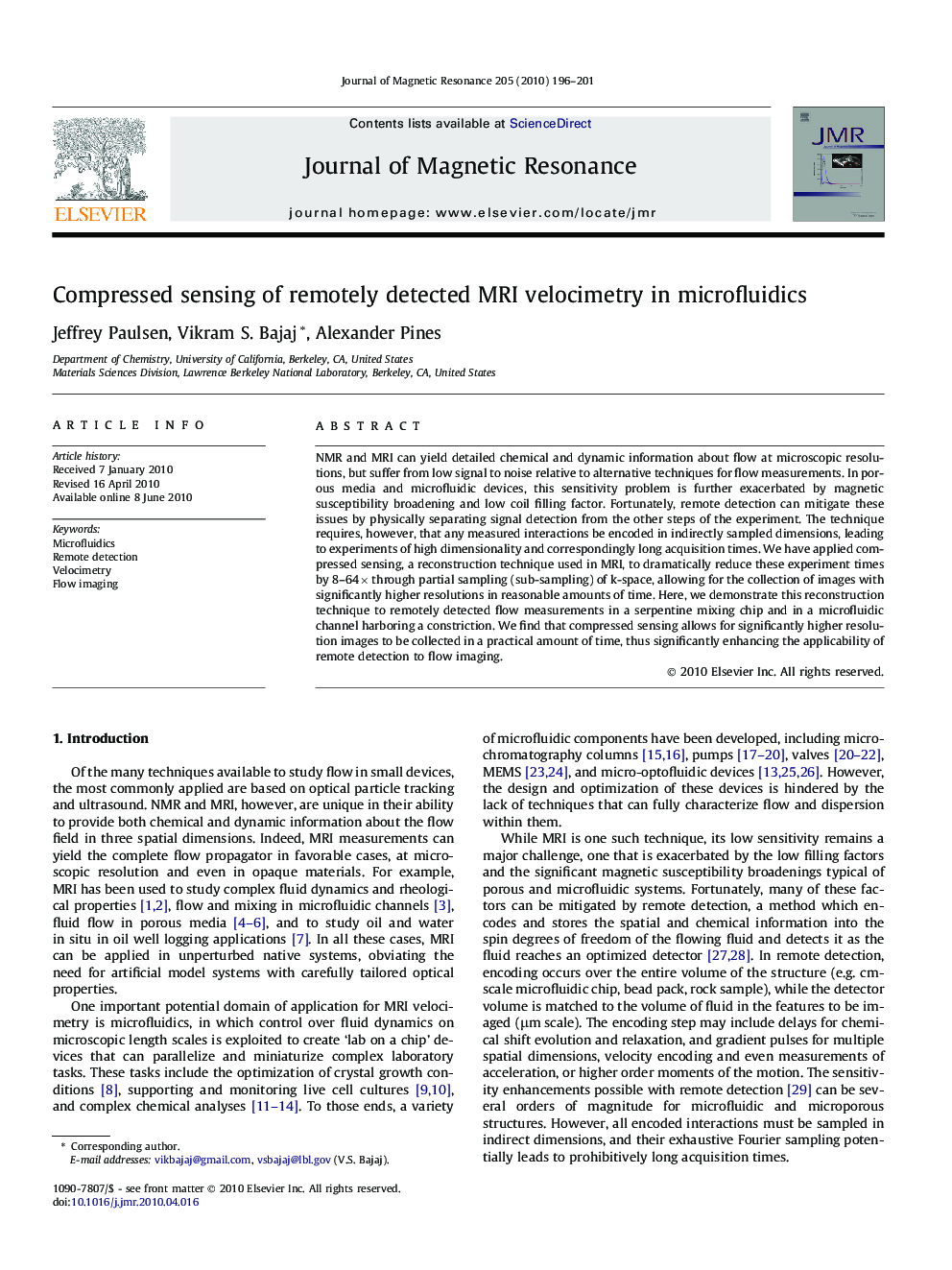| Article ID | Journal | Published Year | Pages | File Type |
|---|---|---|---|---|
| 5406751 | Journal of Magnetic Resonance | 2010 | 6 Pages |
Abstract
NMR and MRI can yield detailed chemical and dynamic information about flow at microscopic resolutions, but suffer from low signal to noise relative to alternative techniques for flow measurements. In porous media and microfluidic devices, this sensitivity problem is further exacerbated by magnetic susceptibility broadening and low coil filling factor. Fortunately, remote detection can mitigate these issues by physically separating signal detection from the other steps of the experiment. The technique requires, however, that any measured interactions be encoded in indirectly sampled dimensions, leading to experiments of high dimensionality and correspondingly long acquisition times. We have applied compressed sensing, a reconstruction technique used in MRI, to dramatically reduce these experiment times by 8-64Ã through partial sampling (sub-sampling) of k-space, allowing for the collection of images with significantly higher resolutions in reasonable amounts of time. Here, we demonstrate this reconstruction technique to remotely detected flow measurements in a serpentine mixing chip and in a microfluidic channel harboring a constriction. We find that compressed sensing allows for significantly higher resolution images to be collected in a practical amount of time, thus significantly enhancing the applicability of remote detection to flow imaging.
Related Topics
Physical Sciences and Engineering
Chemistry
Physical and Theoretical Chemistry
Authors
Jeffrey Paulsen, Vikram S. Bajaj, Alexander Pines,
